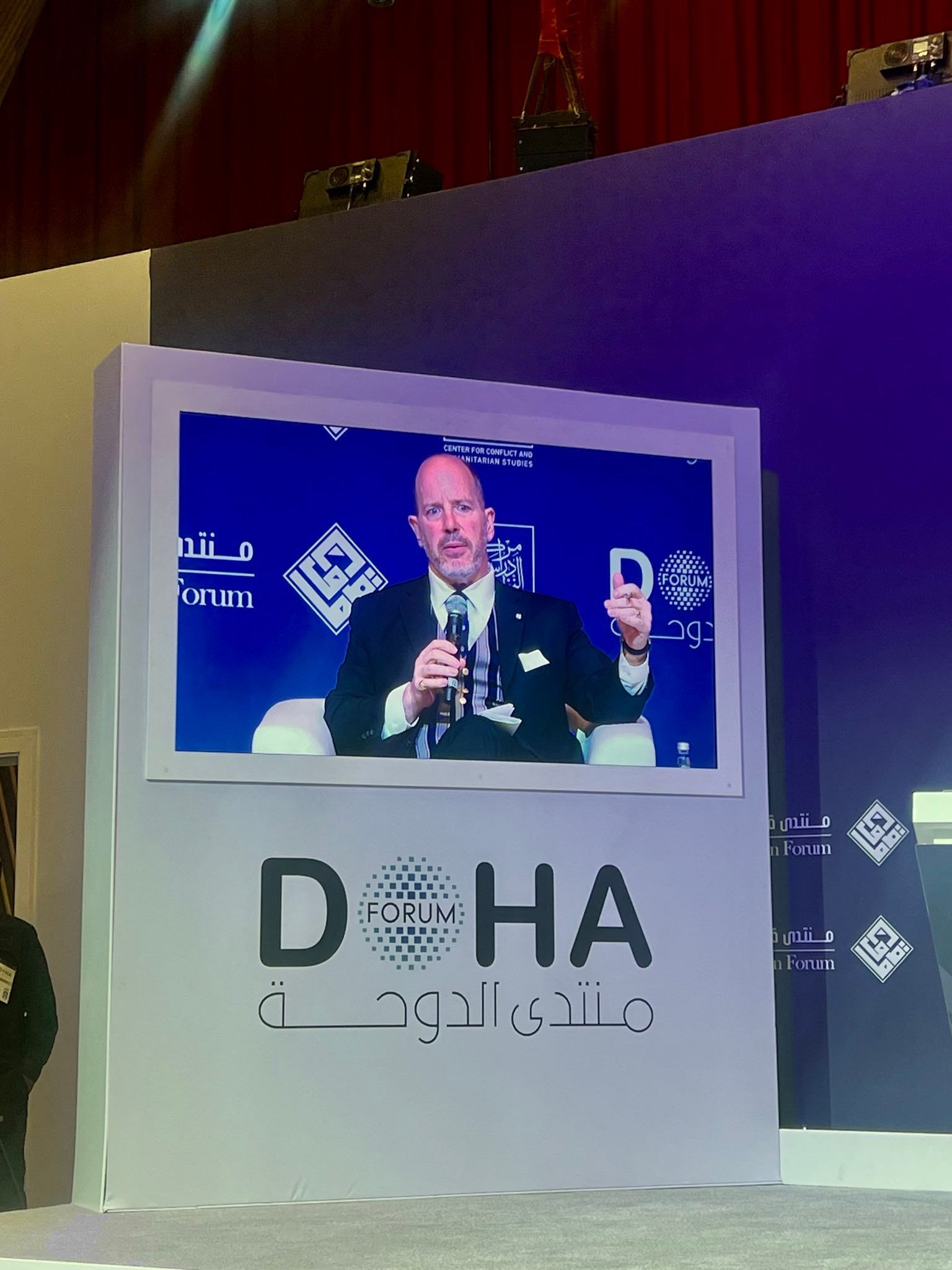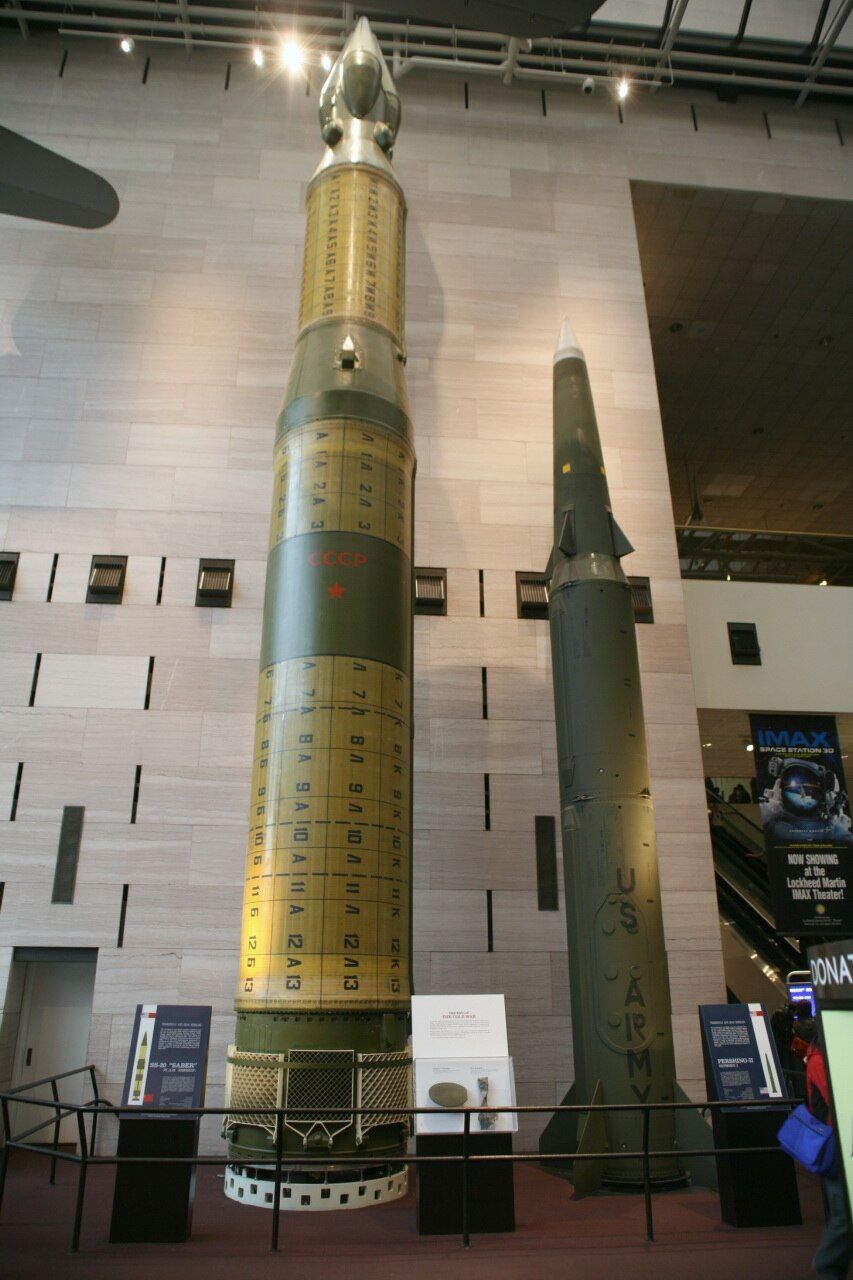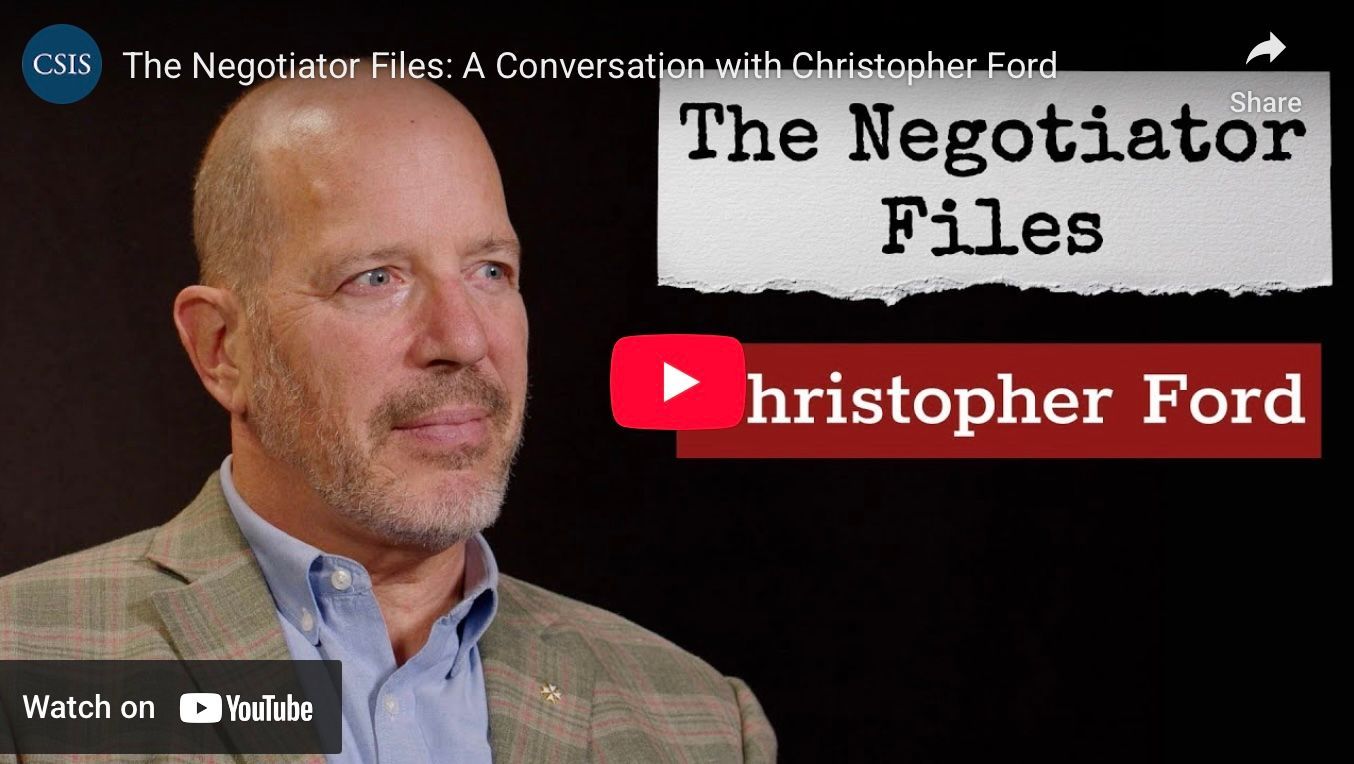Arms Control and Deterrence Beyond “New START”
A note to NPF readers:
On September 17, 2011, New Paradigms Forum suffered a serious loss of data on account of an unspecified problem in a database belonging to our web hosting service, Network Solutions. As a result, all NPF postings after Dr. Ford’s August 2 essay (“ China and the Cyber Landscape ”) disappeared, and Network Solutions has thus far been unable to restore them. Accordingly, Dr. Ford is rebuilding the missing NPF material from scratch, using the text of the unformatted e-mails sent out periodically to the NPF distribution list. (We regret that the numerous hyperlinks that appeared in the original web postings are not recoverable, however. Some text formatting problems may also remain uncaught below. ) Our apologies for any inconvenience this may have caused. We look forward to providing a restored and fully up-to-date NPF site as soon as possible.
ORIGINAL NPF POSTING (August 10, 2011) RESTORED:
Note:
Below follows the text upon which Dr. Ford based his remarks on August 3, 2011, at the Symposium on “21st Century Deterrence Challenges” at the U.S. Strategic Command in Omaha, Nebraska. (Other participants on this panel were Keith Payne, Steve Pifer, Ted Warner, Sergei Rogov, and Barry Blechman.)
Good morning, everyone, and my thanks to General Kehler and the rest of you at STRATCOM for inviting me to this symposium.
The organizers ask important questions about the relationship between arms control and deterrence. Unfortunately, it’s hard to give answers, since forward-looking deterrence analysis is a field in which certainty commonly outruns analysis and evidence.
I’ll offer you my own take on post-“New START” strategic arms control in a moment, but let me first reemphasize this caveat about uncertainty – for it is, in itself, an important point. Uncertainty in deterrent calculations is not a new problem, of course. In the “bad old days” of the Cold War, however, it was comparatively easy to cope with it by erring upwards. (If doubt arose about whether you had enough to deter the adversary, you just built more weapons.) It usually seemed safer to err on the high side – perhaps quite so.
But that’s not the game today. For the last two decades we’ve been dramatically reducing the size of our strategic nuclear force, and in arms control circles it is now the aspiration to discern how little we can get away with possessing. This presents different challenges, for it matters that we now approach some hypothesized “minimum deterrence” point from “above,” rather than from “below.”
If I have a few too many weapons, I just have a few too many. Over -capacity presumably still deters, and neither my allies nor my adversaries are likely to object if I dismantle what is clearly excess. But under -deterrence is more problematic. I think of this as Pascal’s Wager as applied to strategic deterrence: having too much might make you a spendthrift paranoid, but having too little is catastrophic. Why not err high?
But now we’re talking about reductions to some point of “minimal” deterrence, which the conventional wisdom deems must be done through agreements that set binding force limits. This changes the dynamic considerably, because while build- ups are essentially policy choices that can be accelerated, slowed, or reversed at national discretion, it is precisely the point of legally-binding arms reduction agreements that they form a one-way ratchet downward that precludes any subsequent upward recalibration.
Consequently, when it is not clear precisely what deters, there are reasons to “hedge high” when negotiating, or even to avoid agreements altogether. Approaches stressing binding numerical limits may thus sometimes be counterproductive, and cuts may actually be safer and more likely to approach some hypothetical “minimum deterrence point” when they are not mandatory – that is, when they are merely policy choices subject to adjustment if things change, or as understandings mature about what deterrence really requires.
But let me go a bit further, and question the implicit arms control assumption that numbers are the most important element of stable deterrence in the first place. Does everyone think of numbers the way we do? How confident are we about what deters? And – especially if nuclear deterrence someday needs to function on a multilateralized basis against several potential deterrent “targets” or combinations thereof – how confident are we about what deters whom ?
If one is being honest, it is hard not be somewhat skeptical about our ability to predict deterrence, especially where we’re talking about what is minimally necessary for deterrence. Looking back at the Cold War, one could certainly make a case that that nuclear deterrence “worked.” As an analytical proposition, however, this isn’t terribly useful, for it is not so clear exactly what aspects of whose strategic choices deserve how much credit for the non-appearance World War III. Moreover, even if correct, the conclusion of Cold War deterrent success rooted in force posture tells us little about how many fewer weapons, if any, would also have “worked.”
So, even with all the advantages of hindsight, it is hard to distinguish over-deterrence from minimal deterrence, or to identify where precisely the latter may have lain hidden all along. How much more problematic must it be to think we can predict the minimum force that will deter potential future adversaries – particularly new players who did not figure in the massive but essentially bipolar balances of yesteryear?
Having said all that, however, what are my own thoughts on where strategic arms control should go after “New START”? For one thing, I am not convinced that numbers, per se , are at present nearly as important as the conventional wisdom would have it. This is not an argument, mind you, that numbers cannot be important, or that it doesn’t matter how much we cut and how low we go. Clearly, one wouldn’t want to under estimate deterrent requirements, especially when approaching reductions through legally-binding one-way ratchets.
My point is merely that while numerical theories of deterrence have a pleasantly seductive reductionist clarity to them, I’m not convinced that stability can always be boiled down to a question of numbers – or even to aspects of the weaponry itself. Perhaps other things are important too, and given that we can realistically devote only limited amounts of time and political capital to strategic negotiating, are numerical force limits really the most important thing for the United States to worry about in 2011?
My own suspicion is that though this is by no means always the case, traditional numerical arms control can be both an impediment to progress and a distraction from working on what might actually do more good. It may be becoming an impediment, in the sense that we seem to be approaching some kind of limit on how far reductions can go as bilateral negotiations. It’s becoming clear that if we don’t somehow deal with the “third party problem” of a growing and ever more sophisticated Chinese arsenal, it will be increasingly difficult to contemplate more negotiated reductions on our present course.
And this is just the tip of the iceberg, for the numerical-reduction agenda faces longer-term problems from the still-growing nuclear arsenals of other powers, not to mention the fact that the international community seems quite unable to prevent new players from joining the nuclear game. Multiplayer deterrence is likely to be qualitatively different from the bipolarity we knew during the Cold War, but we do not really understand how. Nor are all the players in such games likely to be behavioral mirror images of each other. How confident are we about the “minimum deterrence” point for each player in such a shifting web of relationships?
And what are we to make of possible combinations ? In contemplating the multi-polar strategic world of late-19th-Century Europe, Bismarck brooded darkly about the “nightmare of coalitions.” How are strategic planners to approach analogous nuclear possibilities in the future? In the “bad old days” of the Cold War, nuclear coalitions were not too much of a problem, because all the rest of the world’s nuclear holdings together amounted to only a small fraction of each superpower’s arsenal. In tomorrow’s world, however, that will no longer be true.
Focusing arms control upon reductions to nice round numbers like “1,000 deployed warheads” or somesuch may have political appeal, but we should be careful to ensure that anything we contemplate is actually driven by serious thinking about what deters whom from doing what, why this is, and how confident we feel we can be in such conclusions. At any rate, it seems to me that simply proceeding on autopilot toward more numerically-fixated bilateralism is a dead end.
So much for “impediment.” What about “distraction”? My guess is that the best arms control “bang for the buck” lies not in chasing additional numerical limits but in improving transparency and strategic confidence. To my eye, today’s key strategic relationship problems have less to do with numbers than with concerns about plans, intentions, and understandings.
Chinese strategic programs, for instance, have become a factor affecting U.S. and Russian strategic planning not primarily because of what Beijing has but because of uncertainty about where Beijing is going , and how Chinese leaders really think about nuclear deterrence and other key strategic questions. As the only Nuclear Nonproliferation Treaty (NPT) nuclear weapons state to be building up its nuclear arsenal – and by far the least transparent of the five about nuclear matters – China is becoming strategically disruptive principally because it is not clear what this all means. Its forces aren’t really the problem, at least not yet. Rather, it’s uncertainty about Beijing’s trajectory that elicits suspicion and “hedging” strategies.
Something of the same sort of undertainty-destabilization argument could be made about Russian and Chinese claims to fear U.S. anti-ballistic missile or “conventional prompt global strike” programs – which is basically the point that Sergey [Rogov] just made. Or in connection with U.S. concerns over what has been described by the U.S. Strategic Posture Review Commission as “apparent” Russian yield-producing nuclear tests.
It may be that the most productive arms control agenda is to try to shine more light on the issues that create strategic worry, and which drive force planners into “erring” higher than would otherwise be the case. In some cases, the truth may be reassuring. In others, perhaps not. I have no illusions that it will be possible to dispel all the ghosts that haunt strategic planning cells around the world, but why not dispel those that can be?
Under present conditions – when our numbers have already come down to a small fraction of Cold War levels and we wrestle principally with how little we can get away with retaining – such uncertainties probably have more impact upon stability than whether or not Russo-American force levels are adjusted down another notch. (These uncertainties may, in fact, help preclude further such adjustments anyway.) Rather than simply plunging robotically ahead into yet another round of numerically-fixated confrontational bargaining, why not do what we can to reduce these uncertainties? For these reasons, I suspect that the next strategic arms deal would do better to focus more on transparency and confidence-building – or perhaps on the kind of norm-building “rules of the road” approach Ted [Warner] discussed in his presentation – than on force limits.
-- Christopher Ford









